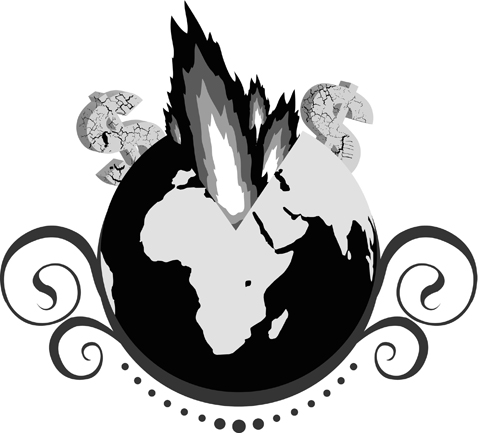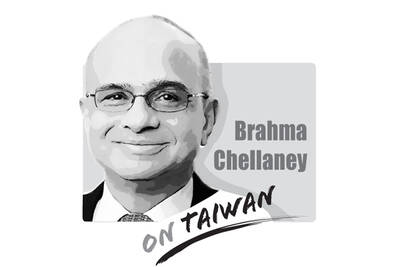It’s no coincidence that most of those who are obsessed with population growth are post-reproductive wealthy white men: It’s about the only environmental issue for which they can’t be blamed.
The brilliant Earth systems scientist James Lovelock, for instance, said in August that “those who fail to see that population growth and climate change are two sides of the same coin are either ignorant or hiding from the truth. These two huge environmental problems are inseparable and to discuss one while ignoring the other is irrational.”
But it’s Lovelock who is being ignorant and irrational.

A paper published on Monday in the journal Environment and Urbanization shows that the places where population has been growing fastest are those in which carbon dioxide has been growing most slowly, and vice versa. Between 1980 and 2005, for instance, sub-Saharan Africa produced 18.5 percent of the world’s population growth and just 2.4 percent of the growth in carbon dioxide. North America turned out only 4 percent of the extra people, but 14 percent of the extra emissions. Sixty-three percent of the world’s population growth happened in places with very low emissions.
Even this does not capture it. The paper points out that about one-sixth of the world’s population is so poor that it produces no significant emissions at all. This is also the group whose growth rate is likely to be highest. Households in India earning less than 3,000 rupees (US$63) a month use a fifth of the electricity per head and one-seventh of the transport fuel of households earning 30,000 rupees or more. Street sleepers use almost nothing. Those who live by processing waste — a large part of the urban underclass — often save more greenhouse gases than they produce.
Many of the emissions for which poorer countries are blamed should in fairness belong to the developed nations. Gas flaring by companies exporting oil from Nigeria, for instance, has produced more greenhouse gases than all other sources in sub-Saharan Africa put together. Even deforestation in poor countries is driven mostly by commercial operations delivering timber, meat and animal feed to rich consumers. The rural poor do far less harm.
The paper’s author, David Satterthwaite, points out that the old formula taught to students of development — that total impact equals population times affluence times technology (I = PAT) — is wrong. Total impact should be measured as I = CAT: consumers times affluence times technology. Many of the world’s people use so little that they wouldn’t figure in this equation. They are the ones who have most children.
WEAK CORRELATION
While there’s a weak correlation between global warming and population growth, there’s a strong correlation between global warming and wealth.
I’ve been taking a look at a few super-yachts, as I’ll need somewhere to entertain government ministers in the style to which they are accustomed. First I went through the plans for Royal Falcon Fleet’s RFF135, but when I discovered that it burns only 750 liters of fuel per hour I realized that it wasn’t going to impress Lord Mandelson. I might raise half an eyebrow with the Overmarine Mangusta 105, which sucks up 850 liters per hour. But the raft that’s really caught my eye is made by Wally Yachts in Monaco. The WallyPower 118 (which gives total wallies a sensation of power) consumes 3,400 liters per hour when traveling at 60 knots. That’s nearly a liter per second. Another way of putting it is 31 liters per kilometer.
Of course, to make a real splash I’ll have to shell out on teak and mahogany fittings, carry a few jetskis and a mini-submarine, ferry my guests to the marina by private plane and helicopter, offer them bluefin tuna sushi and beluga caviar and drive the beast so fast that I mash up half the marine life of the Mediterranean. As the owner of one of these yachts I’ll do more damage to the biosphere in 10 minutes than most Africans inflict in a lifetime. Now we’re burning, baby.
Someone I know who hangs out with the very rich tells me that in the banker belt of the lower Thames valley, near London, there are people who heat their outdoor swimming pools to bath temperature, all year round. They like to lie in the pool on winter nights, looking up at the stars. The fuel costs them £3,000 (US$4,800) a month. One hundred thousand people living like these bankers would knacker our life support systems faster than 10 billion people living like the African peasantry. But at least the super wealthy have the good manners not to breed very much, so the rich old men who bang on about human reproduction leave them alone.
GOOD CAUSE
In May the UK’s Sunday Times carried an article headlined “Billionaire club in bid to curb overpopulation.” It revealed that “some of America’s leading billionaires have met secretly” to decide which good cause they should support.
“A consensus emerged that they would back a strategy in which population growth would be tackled as a potentially disastrous environmental, social and industrial threat,” the Sunday Times said.
The ultra-rich, in other words, have decided that it’s the very poor who are trashing the planet. You grope for a metaphor, but it’s impossible to satirize.
James Lovelock, like Sir David Attenborough and Jonathan Porritt, is a patron of the Optimum Population Trust (OPT). It is one of dozens of campaigns and charities whose sole purpose is to discourage people from breeding in the name of saving the biosphere. But I haven’t been able to find any campaign whose sole purpose is to address the impacts of the very rich.
The obsessives could argue that the people breeding rapidly today might one day become richer. But as the super wealthy grab an ever greater share and resources begin to run dry, this, for most of the very poor, is a diminishing prospect. There are strong social reasons for helping people to manage their reproduction, but weak environmental reasons — except among wealthier populations.
The Optimum Population Trust glosses over the fact that the world is going through demographic transition: population growth rates are slowing down almost everywhere and the number of people is likely, according to a paper in Nature, to peak this century, probably at about 10 billion. Most of the growth will take place among those who consume almost nothing.
But no one anticipates a consumption transition. People breed less as they become richer, but they don’t consume less — they consume more. As the habits of the super-rich show, there are no limits to human extravagance. Consumption can be expected to rise with economic growth until the biosphere hits the buffers. Anyone who understands this and still considers that population, not consumption, is the big issue is, in Lovelock’s words, “hiding from the truth.” It is the worst kind of paternalism, blaming the poor for the excesses of the rich.
So where are the movements protesting about the stinking rich destroying our living systems? Where is the direct action against super-yachts and private jets? Where’s Class War when you need it?
It’s time we had the guts to name the problem. It’s not sex; it’s money. It’s not the poor; it’s the rich.
The Executive Yuan recently revised a page of its Web site on ethnic groups in Taiwan, replacing the term “Han” (漢族) with “the rest of the population.” The page, which was updated on March 24, describes the composition of Taiwan’s registered households as indigenous (2.5 percent), foreign origin (1.2 percent) and the rest of the population (96.2 percent). The change was picked up by a social media user and amplified by local media, sparking heated discussion over the weekend. The pan-blue and pro-China camp called it a politically motivated desinicization attempt to obscure the Han Chinese ethnicity of most Taiwanese.
On Wednesday last week, the Rossiyskaya Gazeta published an article by Chinese President Xi Jinping (習近平) asserting the People’s Republic of China’s (PRC) territorial claim over Taiwan effective 1945, predicated upon instruments such as the 1943 Cairo Declaration and the 1945 Potsdam Proclamation. The article further contended that this de jure and de facto status was subsequently reaffirmed by UN General Assembly Resolution 2758 of 1971. The Ministry of Foreign Affairs promptly issued a statement categorically repudiating these assertions. In addition to the reasons put forward by the ministry, I believe that China’s assertions are open to questions in international
The Legislative Yuan passed an amendment on Friday last week to add four national holidays and make Workers’ Day a national holiday for all sectors — a move referred to as “four plus one.” The Chinese Nationalist Party (KMT) and the Taiwan People’s Party (TPP), who used their combined legislative majority to push the bill through its third reading, claim the holidays were chosen based on their inherent significance and social relevance. However, in passing the amendment, they have stuck to the traditional mindset of taking a holiday just for the sake of it, failing to make good use of

As strategic tensions escalate across the vast Indo-Pacific region, Taiwan has emerged as more than a potential flashpoint. It is the fulcrum upon which the credibility of the evolving American-led strategy of integrated deterrence now rests. How the US and regional powers like Japan respond to Taiwan’s defense, and how credible the deterrent against Chinese aggression proves to be, will profoundly shape the Indo-Pacific security architecture for years to come. A successful defense of Taiwan through strengthened deterrence in the Indo-Pacific would enhance the credibility of the US-led alliance system and underpin America’s global preeminence, while a failure of integrated deterrence would